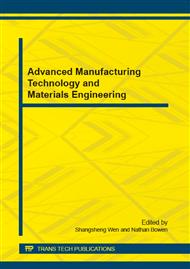p.356
p.363
p.370
p.376
p.381
p.385
p.390
p.394
p.400
Failure Mechanism of Ultra-High Pressure Fluid Control Products
Abstract:
The square elbows used in oil and gas fields were often failed because of serious erosion. Some of the products even burst. In this paper, the failure mechanism of square elbow was investigated by using electron microscopy (OM), electron microscopy (SEM) methods. The research results show that the elbow products failed due to its low impact toughness after carburizing and quenching. The erosion angle is nearly ninety-degree. By increasing the tempering temperature, reducing the surface hardness and improving toughness, the serious erosion phenomenon can be effectively avoided. There are two main reasons of the elbow products burst. One reason is the high inclusion content of the material. The other is the low impact toughness. Raising the quality specification of materials can appropriate increase the low impact toughness after heat treatment. It is pointed out that the product would be more safety by improve its impact toughness.
Info:
Periodical:
Pages:
381-384
Citation:
Online since:
December 2014
Authors:
Keywords:
Price:
Сopyright:
© 2015 Trans Tech Publications Ltd. All Rights Reserved
Share:
Citation:


